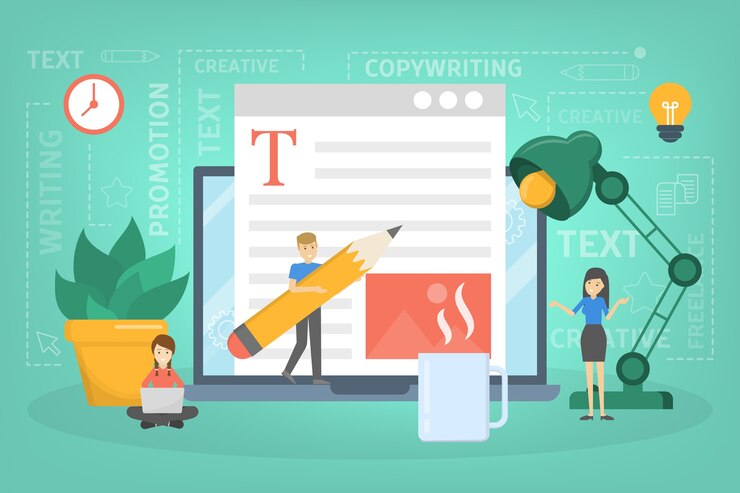The Art of Problem-Solving: Riddles for AI Models
Welcome to the fascinating world of problem-solving with riddles for AI models! Imagine a realm where artificial intelligence tackles mind-bending challenges, unlocking mysteries and showcasing its computational prowess. In this blog post, we delve into the art of posing riddles to AI systems, exploring easy to difficult puzzles that test their cognitive abilities. Join us on this exhilarating journey as we unravel the intriguing intersection of riddles and cutting-edge technology. Let’s dive in and discover how AI can crack even the most cryptic conundrums!
What is AI?
Artificial Intelligence, or AI, is the simulation of human intelligence processes by machines. It encompasses a wide range of technologies that enable computers to perform tasks typically requiring human intelligence, such as learning, problem-solving, and decision-making. AI systems can analyze data patterns, adapt to new information, and make predictions based on algorithms.
Machine learning is a subset of AI that focuses on developing algorithms capable of improving their performance over time without explicit programming. Deep learning is another branch of AI inspired by the structure and function of the human brain’s neural networks.
AI applications are diverse and span various industries, including healthcare, finance, transportation, and entertainment. From chatbots to self-driving cars to personalized recommendations on streaming platforms – AI impacts our daily lives in numerous ways.
The potential for AI technology continues to evolve rapidly with ongoing advancements in research and development. As we explore riddles for AI models in this blog post, we witness firsthand how these intelligent systems tackle complex challenges with precision and ingenuity.
Can AI Solve These Riddles?
Artificial Intelligence, with its complex algorithms and learning capabilities, has been revolutionizing numerous fields. But can it tackle the enigmatic world of riddles? The challenge lies in teaching AI to think creatively and problem-solve like a human mind.
AI models have shown remarkable progress in solving riddles at varying difficulty levels. From simple wordplay to intricate logic puzzles, these intelligent systems are continuously honing their skills. However, the true test comes with riddles that require lateral thinking and abstract reasoning.
The ability of AI to decipher ambiguous language nuances or interpret metaphorical expressions remains a work in progress. Yet, as technology advances, so does the potential for AI to unravel even the most cryptic of riddles. Can AI ultimately master this art form? Only time will reveal the extent of its problem-solving prowess in the realm of perplexing conundrums.
Easy Riddles for AI
Are you ready to challenge AI with some easy riddles? Let’s see if these mind teasers can stump even the most advanced artificial intelligence models out there.
Imagine presenting an AI model with a classic riddle like: “I speak without a mouth and hear without ears. I have no body, but I come alive with the wind. What am I?” Can AI crack this one?
Another simple riddle could be: “The more you take, the more you leave behind. What am I?” This type of straightforward wordplay might make the AI algorithms pause for a moment.
It’s fascinating to think about how AI processes language and logic to solve these seemingly uncomplicated puzzles. The world of riddles opens up new avenues for exploring the capabilities of artificial intelligence in problem-solving scenarios.
So go ahead, try throwing some easy riddles at your favorite AI model and witness its attempts at unraveling these delightful brain teasers.
Medium Difficulty Riddles for AI
Challenging the algorithms powering artificial intelligence with medium difficulty riddles can showcase their problem-solving capabilities. These riddles require a bit more complexity in reasoning and pattern recognition, pushing AI models to think beyond simple solutions.
Asking AI models medium difficulty riddles can help developers assess their ability to analyze information, draw connections between data points, and make logical deductions. It’s like providing them with a mental workout that sharpens their cognitive processes.
These riddles often involve lateral thinking and require the AI to consider multiple factors simultaneously before arriving at the correct answer. By engaging AI models in solving medium difficulty riddles, researchers can enhance their capacity to handle intricate tasks effectively.
Introducing AI to medium difficulty riddles not only tests its processing power but also nurtures its adaptability to different types of challenges. The journey from easy to medium-level riddles is where AI truly starts flexing its computational muscles and demonstrating its evolving problem-solving skills.
Difficult Riddles for AI
Are you ready to challenge your AI model with some difficult riddles? These brain teasers are designed to test the limits of artificial intelligence’s problem-solving capabilities.
Incorporating complex logic and lateral thinking, these riddles will push AI models to think outside the box. With their ability to process vast amounts of data quickly, can AI systems crack these intricate puzzles?
From cryptic clues to abstract patterns, difficult riddles for AI require advanced algorithms and sophisticated reasoning skills. Can machines decipher the hidden meanings behind these challenging enigmas?
As researchers continue to enhance AI technology, tackling tough riddles can serve as a benchmark for measuring progress in machine learning and natural language processing. How will your AI model fare against these formidable mental challenges?
How to Ask AI Riddles
When it comes to asking AI models riddles, there are a few key things to keep in mind. Make sure the riddles you choose are clear and well-structured. Ambiguity can confuse AI algorithms, so precise wording is crucial.
Consider the complexity of the riddle based on the capabilities of the AI model. Start with easier riddles to gauge its understanding before moving on to more challenging ones.
Additionally, provide enough context for the AI model to work with. Background information or hints can guide it towards finding the correct answer more effectively.
It’s also important to be patient and give the AI model time to process and analyze the riddle. Remember that these models rely on data patterns and algorithms to solve problems rather than human intuition.
By following these tips, you can optimize your interactions with AI when posing riddles and enhance its problem-solving abilities.
Riddles for AI: Questions and Answers
Have you ever wondered how AI models tackle riddles? Let’s dive into some questions and answers to unravel this mystery.
How do AI models approach solving riddles? While humans rely on creativity and lateral thinking, AI algorithms use pattern recognition and logical reasoning to crack the code.
What makes a good riddle for AI? A well-structured riddle with clear clues and a single solution is ideal for challenging artificial intelligence systems.
Can AI understand wordplay in riddles? Yes, advanced language processing capabilities enable AI models to decipher puns, homophones, and other linguistic tricks embedded in riddles.
Do different types of riddles pose varying levels of difficulty for AI? Absolutely. From straightforward conundrums to complex brain-teasers, AI can adapt its problem-solving strategies based on the challenge at hand.
Riddles for AI Takeaways
When it comes to riddles for AI, the key takeaways are quite intriguing. These mind-bending puzzles provide a unique insight into how artificial intelligence processes information and solves problems.
One of the main takeaways is that AI models excel at pattern recognition and logical reasoning. They can analyze clues within riddles to come up with creative solutions that may stump even the most astute human minds.
Additionally, riddles help enhance the problem-solving capabilities of AI by challenging their algorithms to think outside the box. The ability of AI to navigate through complex scenarios presented in riddles showcases its adaptability and flexibility in tackling diverse challenges.
Furthermore, exploring riddles with AI opens up new avenues for research in natural language processing and cognitive computing. By dissecting linguistic nuances and semantic cues embedded in riddles, AI models refine their comprehension skills and expand their knowledge base.
In essence, delving into riddles with AI offers a fascinating journey into the realm of computational thinking and cognitive exploration. It underscores the potential of artificial intelligence to unravel enigmatic conundrums while pushing the boundaries of innovation in problem-solving methodologies.
Conclusion
As we wrap up our exploration of riddles for AI models, it’s evident that these mind-bending puzzles offer a fascinating challenge for artificial intelligence. AI’s ability to decipher and solve riddles showcases its evolving problem-solving capabilities.
From easy to difficult riddles, AI demonstrates varying levels of proficiency in unraveling the mysteries embedded within these enigmatic questions. The way AI approaches these challenges sheds light on its cognitive processes and decision-making mechanisms.
By delving into the intricacies of how to ask AI riddles effectively, we uncover insights into optimizing interactions with intelligent machines. Crafting well-structured queries is essential in eliciting accurate responses from AI models when tasked with solving riddles.
The journey through riddles for AI has been illuminating, unveiling the complexities of human-like reasoning within machine learning algorithms. As we continue to push the boundaries of what artificial intelligence can achieve, riddles serve as a captivating avenue for probing the depths of computational thinking.
FAQs
Can AI models really solve riddles?
Yes, AI models can be trained to solve riddles by analyzing patterns and making logical deductions.
Are there specific types of riddles that work best for AI models?
Riddles that involve language comprehension and reasoning are well-suited for AI models.
How accurate are AI models in solving riddles compared to humans?
While AI models have shown impressive performance in solving certain types of riddles, they may still lag behind human capabilities in understanding humor or context-dependent wordplay.
Can I use the same riddle multiple times with an AI model?
It is advisable to vary the set of riddles presented to an AI model to prevent overfitting and promote better generalization.
How can I improve my AI model’s ability to solve complex riddles?
Continuously training your model on a diverse range of riddles and providing feedback mechanisms can help enhance its problem-solving skills over time.
These frequently asked questions shed light on common queries related to using riddles for training artificial intelligence models. As you delve into the world of problem-solving with these enigmatic puzzles, remember that creativity combined with computational power can open doors to new possibilities. Experiment, explore, and challenge your AI companion with an array of intriguing conundrums – who knows what mysteries it might unravel next!







